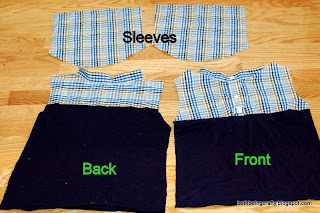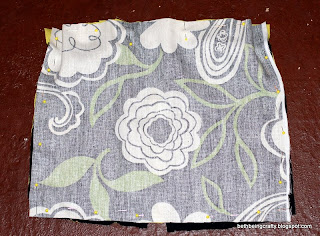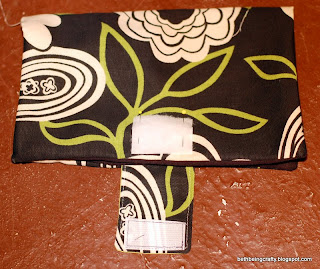So, without further ado, OUR HOUSE!
 |
| The paint job happened after we'd lived here for about a year. |
I'll do a quick tour of the main floor-that's where we did most of the work before we moved in--before moving on to the monster project that was our upstairs renovation.
 |
| Paint: Sherwin Williams Compatible Cream (top) and Butternut (below) |
Most of the "before" pictures were taken before the previous owners moved out. We ended up buying it before it went on the market, so these are just some shots their realtor had snapped to show her colleagues. So sometimes I don't have great angles for comparisons, but I did my best! In the living and dining rooms, we pretty much just painted.
 |
| Paint: Sherwin Williams Compatible Cream |
We painted our kitchen the same color green as the outside of the house. (Clary Sage from Sherwin Williams, if you're curious).
We've still got some more work to do in the bathroom--intending to install crown molding and need to replace the floors.
 |
| That text hidden behind my watermark says that we also enclosed the tub. Paint: Benjamin Moore Dartsmouth Green |
A quick peek at the basement--we painted, and eventually took out the carpet and painted the concrete floor. The basement is the site of our next major project, which the husband speaks of as though it will be happening sometime before my children are in high school. I am not so sure.
 |
| Paint: Sherwin Williams Nomadic Desert |
There is a play area in the basement too, as well as my sewing area. I'm not showing it to you. It's served as extra storage and staging area during the renovation, and it's still just embarrassing. Just imagine a lovely open area with a train table and perfectly organized toy bins, and a sparkling sewing machine with labeled bins and folded color coded fabrics, and that's pretty much what's over there. You'll just have to take my word for it.
Moving back to upstairs--the stairs themselves were a huge portion of this most recent project.
I am LOVING all the space to hang family photos! Sure, I could have hung some before, but it was a bit awkward with the divided wall, and we also pushed back the wall over the end of the stairs so you don't hit your head coming up, which opened up the area and made the pictures easier to look at.
We put a hallway through the original master bedroom, allowing us to open up the landing/upstairs. It feels so much brighter and more open up there now!
 |
| Not done hanging more pictures upstairs yet! Paint: Sherwin Williams Compatible Cream |
We stole some of the square footage from this room in order to give the master suite a good sized walk-in closet. MUAH HA HA HA HA. The funny thing is, it actually looks bigger now.
 |
| Paint: Sherwin Williams Resolute Blue and Great Green (the boy's picks) |
The original master suite became Little Sister's new room. We put a new wall in this room in order to create the open hallway you saw before.
 |
| Paint: Sherwin Williams Sole (that should have an accent over the e--"so-LE!" |
Previously, you had to walk through the master suite to get to a sitting area, which had doors to a small master closet and a bathroom. The sitting room was being used as a master closet extension.
When we moved into the house, I was 8 months pregnant with Little Sister. The sitting room made a perfect little nursery for her.
 |
| Also Sherwin Williams so-LE! With custom-mixed colors for the mural. |
But even then we knew that it was not a long-term solution. Having to walk through mom and dad's room to get to the stairs is great for a baby--not so great when she gets older. So the main part of the project was figuring out how to maximize the space in the sitting room to turn it into a master suite. We talked to a few people about doing a dormer, but it was not in the budget. So we got creative with our contractor, and were able to turn an 8x10 sitting room into a 12 x 14 master bedroom!
 |
| Next up: buy grown up bedroom furniture. Paint: Behr Rich Taupe |
The footprint of the bathroom stayed the same, but it's probably one of the most impactful changes in the space.
I love the color in here. It's a little hard to see in the pictures, but it's Behr Rocky Mountain Sky, kind of a grey-blue. Very peaceful.
I mean. It feels so luxurious now. I LOVE it.
We didn't have room for two sinks in there, so...
 |
| Paint: Sherwin Williams Nomadic Desert |
Oh, and look! I finally have a place to hang the awesome jewelry display my lovely friend Jill made for my birthday almost a year ago! It's been tucked into a closet, waiting for its moment to shine. And I must say--now that my jewelry is out where I can see it, I have been actually wearing it! I'd pretty much been wearing the same necklace (maybe two) and pair of earrings for the last year, but now that I have all of my choices at my fingertips when I'm getting ready in the morning, I have been making good use of them.
The rest of the closet isn't finished yet (it's just an empty room with a dresser, and my clothes in a bunch of suitcases. But man, you guys! We are getting there!
















































.JPG)











